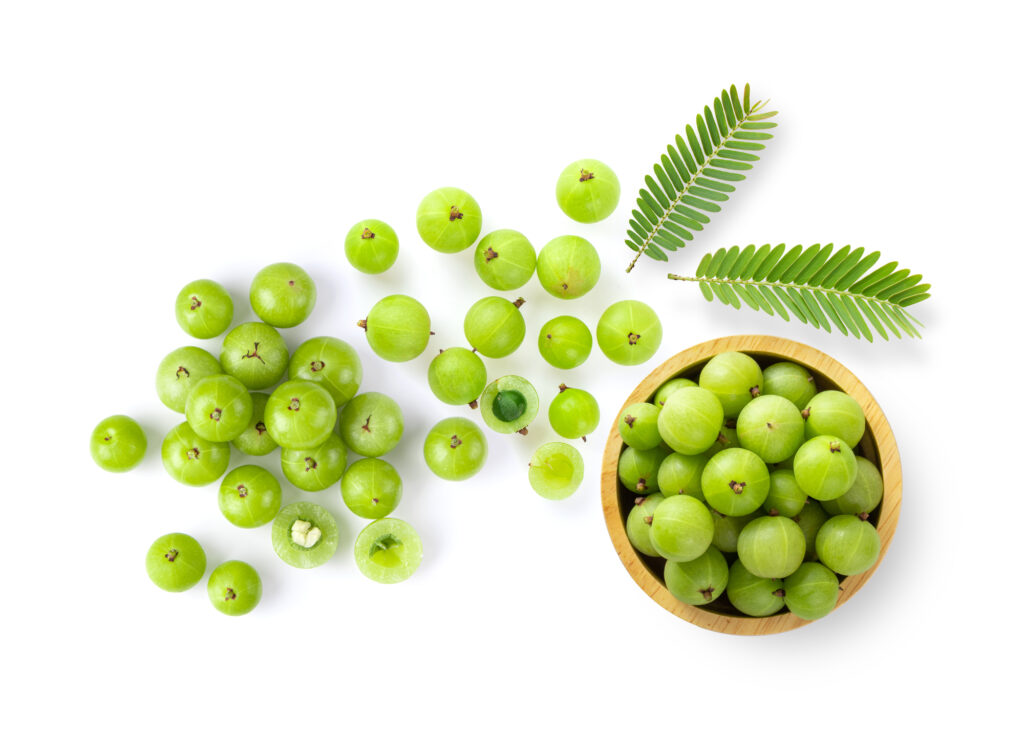An extract of amla fruit (Emblica officinalis), also called Indian gooseberry, was shown to benefit type 2 diabetics with dyslipidemia, according to a new study in Food & Function.
Researchers compared a proprietary preparation of amla (Saberry) with the popular diabetes drug metformin in a 90-day, randomized, open-label trial. The extract provided powerful blood sugar support to newly diagnosed type 2 diabetics who also had dyslipidemia (high blood levels of lipids).
Study Details
The research team investigated key markers of blood sugar levels, including fasting blood sugar and post prandial blood sugar. Lipid levels — LDL, VLDL, and total cholesterol — were also analyzed. There were 126 participants, with BMIs between 27–35. Scientists divided subjects into three groups: 1g Saberry per day, 2g Saberry per day, or 500mg metformin daily (the standard treatment group). Both 1 and 2g doses of Saberry helped enhance glucose and lipid metabolism. Results included:
- 1g Saberry lowered fasting blood sugar by 14.6%, similar to results in the metformin group.
- 2g Saberry reduced fasting blood sugar by 21.8%, exceeding the results in the metformin group.
- Total cholesterol, LDL, VLDL, and triglyceride levels were all lowered with Saberry, with 2g providing more dramatic results over 1g.
“This study is perhaps the first to evaluate the clinical efficacy and safety of a standardized extract containing 10% BGG [β-glucogallin] along with hydrolyzable tannins. BGG was reported to be the major component isolated from E. officinalis fruits showing potent inhibition of human aldose reductase implicated in the development of secondary complications of diabetes,” wrote the study authors.
Saberry is a patented blend of Emblica officinalis extract (EOE) and beta glucogallin, a bioactive compound isolated from Indian Gooseberry. As a water-soluble ingredient, Saberry is often used in functional beverages, as well as pickles and jams. Fresh amla fruit has a sour, astringent taste that is often mixed with honey or other sweeteners to balance the flavors.
Conclusion
The present data provide strong evidence that EOE (standardized for 10% BGG) at 1 g and 2 g day−1 is safe, well tolerated, and exerted effective antidiabetic and lipid-lowering activities in diabetic dyslipidemia patients. More importantly, EOE at a dose of 2 g day−1 showed superior antidiabetic and anti-dyslipidemia activities compared to the pharmaceutical drug, metformin. Natural products such as standardized extract of E. officinalis is an attractive lead as a potential supplement for the management of T2DM with associated dyslipidemia since their low toxicity allows them to be used as long-term prophylactics.






